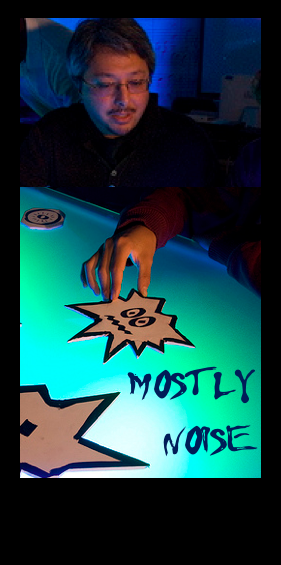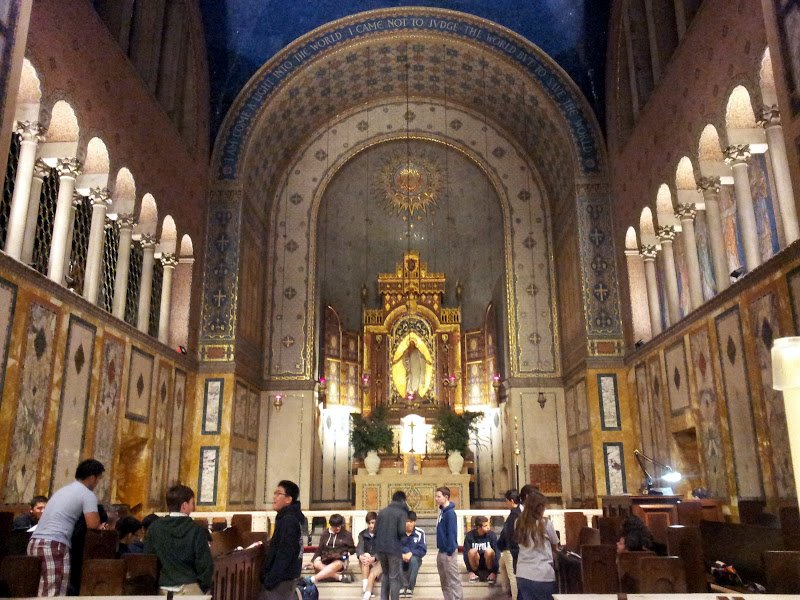Reflections on our Lessons & Carols Service
December 18, 2012
— 2 Comments
Thursday, December 13th, I conducted our annual Lessons & Carols service at St. John’s Cathedral, Los Angeles. This year, I used my previous model from when the choir sang school liturgies. I taught my academic music students to sing and included them in the service.
It was very successful in so many ways. After the service, I invited the students to reflect on the experience. I am reprinting some of their quotes in this post. The overwhelmingly positive reaction really reminds me how powerful music can be when it is conscientiously taught and prepared. Sometimes, being in the trenches of music-making can obscure the original reasons for becoming a musician in the first place.
When I started singing I never thought it would be so fun but so serious at the same time. This experience has made me more interested in music and kind of makes me want to join the choir. Kenneth An
This was much more than I had ever expected it to be. It will be one of the most memorable parts of my high school career. Jack Dunn
The Loyola Choir
It took a lot of hard work but it payed off in the end. If I had this opportunity again, I would definitely do it! Kevin Fraher
It was really intense but super fun at the same time. I was happy that my parents were able to watch me be a part of something great. Raphael Mercurio
It was amazing singing with everyone. It gave me a sense of euphoria. Paul Ostrick
I did not expect it to be as powerful as it was. Sam Ostrin
I must say that this was one of the greatest experiences so far…of my life. My parents said that it looked like I was really enjoying myself- and I was! Matthew Gorski
Loyola music appreciation students
The actual performance was unbelievable and overwhelming. This was truly a once-in-a lifetime opportunity and I am so grateful. It was truly a memorable night. Chase Matherly
This concert was a big deal. Everyone should be able to participate and realize anyone can sing.
Before the performance I didn’t expect as much as what I received from this experience. Dominique Royall
This experience was actually really surprising for me. Coming into this concert, I was dreading it, but I actually had a ton of fun.
Lastly, this entire experience and class has made me appreciate music much more. Mostly because I i have realized how difficult it is to sing properly and to play music. I now look at singers and musicians as people who put a ton of work into their careers. Luke Nassif
This performance, at first, was something I was not looking forward to. At first, I thought it would not be fun and I would just go through the motions of practice.
Once I got to the cathedral, I realized this would actually be a really fun experience. Once the concert started, I was nervous, but I actually had a really good time.
Although at first I was not looking forward to the concert, I now know it was actually a really fun experience. Riley Renick
In this concert, I realized how good all the classes could be if we tried hard and set our minds to doing well. I also faced a fear of getting on stage and performing in front of a crowd.
The concert also created unity and a bond between me and the rest of the performers. It felt good to be a part of something big like the concert.
The concert also created a memory that will always last for me and my parents. Owen O’Brien
For the Lessons & Carols, I would honestly say it was an amazing experience. At first I was thinking: “Wow…singing?” But at Loyola, the singing skills I have obtained has probably taught me significantly more than the 8 years at my old school. Just the experience and singing with an orchestra had a life-changing effect on me. Matt Fang
Music space at St. John’s Cathedral
The overall concert was a whole new experience for me. I have never done something so incredibly awesome as that. The energy in there was simply amazing. I hope we do something similar to this second semester. My first time doing something like this was a little scary, but when you’re up there, you just get going and remember your technique and it is just natural.
It is very similar to playing basketball in front of a thousand people. You don’t wanna mess up, but the people around you are there with you ready to help. Spencer Bailey
I really didn’t expect so many people to go and see us perform. It was really awesome that so many people wanted to hear us sing.
Overall, it was a fun night. We played perfectly as planned and doing it with all my friends made it a memorable experience. Thomas Zetino
The whole experience was awesome. I expected it to be a little boring when I first heard about it. As it came closer to the event, I began to get excited for it.
The performance was really cool and a lot of fun. It was also nice to learn a new skill such as singing. I had a blast and will remember this experience the rest of my life. Josef Topete









